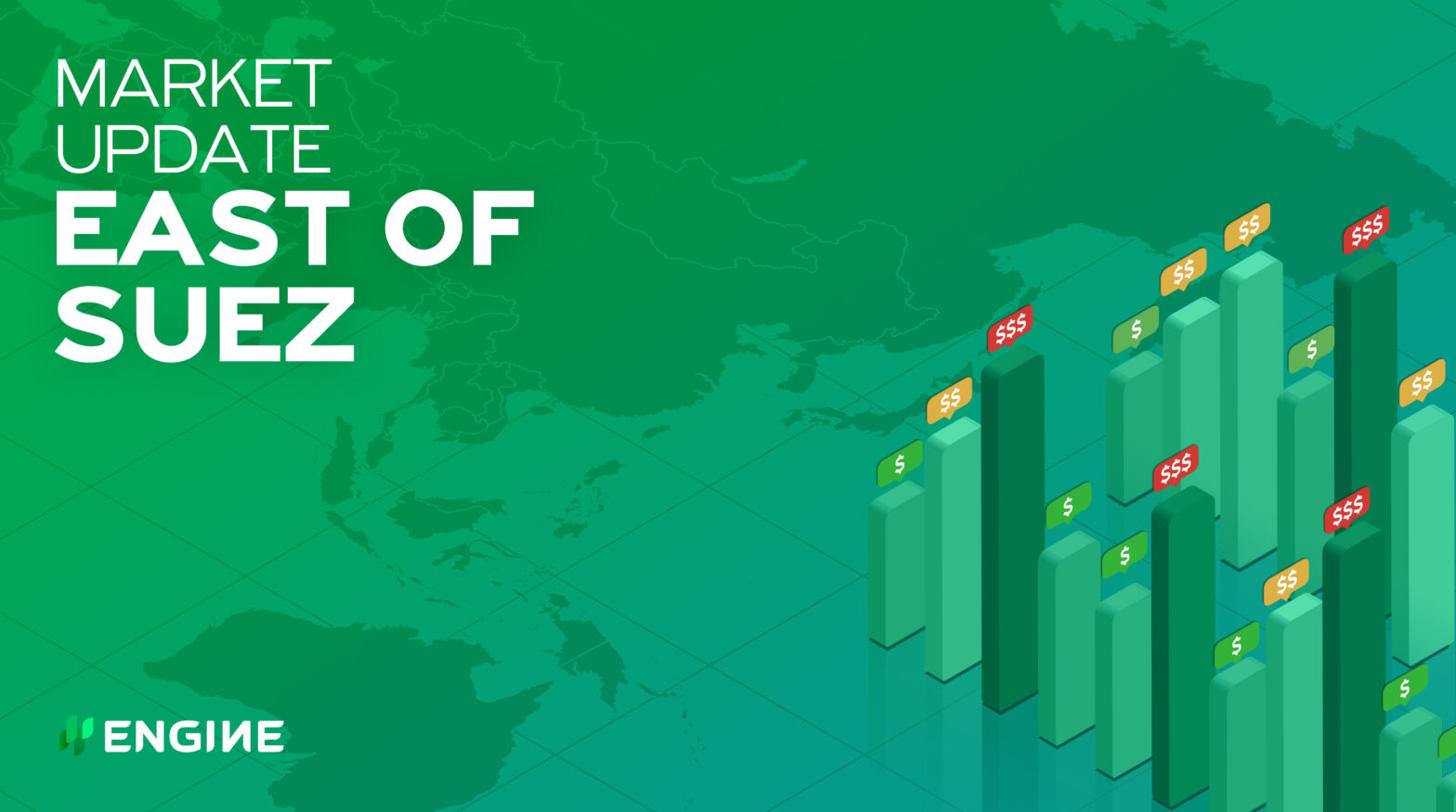East of Suez bunker prices are mostly up on the day, while some ports have seen small losses amid a dip for Brent.
Changes on the day to 16.00 SGT (08.00 GMT) today:
- VLSFO prices up in Singapore ($3/mt), Zhoushan ($2/mt), and down in Fujairah ($1/mt)
- LSMGO prices up in Singapore and Zhoushan ($5/mt), and down in Fujairah ($3/mt)
- HSFO380 prices up in Singapore ($2/mt), Fujairah ($1/mt), and down in Zhoushan ($4/mt)
Singapore’s Hi5 spread continues to hover at multi-month lows of $86/mt this week, as both HSFO380 and VLSFO have seen similar gains on the day.
HSFO380 now requires 7-8 days of lead time in Singapore, which is around three days shorter compared to Fujairah’s lead times this week.
Japan’s low sulphur fuel oil (LSFO) stocks rose to their highest levels since mid-June last week, data from the Petroleum Association of Japan showed yesterday. The stocks grew on the back of a 42% production increase. Higher production has freed up LSFO for exports, which rose to their highest level since mid-April.
Fuel availability has recently improved in Tokyo Bay, with all three fuel grades being readily available. Lead times have now dropped to 4-5 days for HSFO380, VLSFO and LSMGO, compared with 7-8 days recommended in July.
Brent
Front-month ICE Brent has fallen for a second day, shedding $0.69/bbl to $71.62/bbl at 16.00 SGT (08.00 GMT).
Brent is down as OPEC+ agreed yesterday to maintain its output policy of bringing 400,000 b/d of oil back into the market in monthly increments. The group stuck to its policy despite calls from the US to pump more oil to prevent prices from rising further.
“As widely expected there was little in the way of surprises from yesterday’s OPEC+ meeting… While OPEC+ acknowledges that there is still plenty of uncertainty related to Covid-19, they believe that fundamentals continue to improve,” ING strategist Warren Patterson commented.
US crude inventories fell by more than expected last week. 7.17 million bbls of crude was drawn out of storage in the week to 27 August, when they measured 425.54 million bbls.
Brent is under pressure as several refineries in Louisiana remain shut or producing at reduced capacity after they were struck by Hurricane Ida. This will lower their crude intake, especially if offshore rigs and platforms return to operation at a faster pace than the refineries.
About 95% of offshore oil production in the Gulf of Mexico was shut in on Monday, according to a tally by the Bureau of Safety and Environmental Enforcement. 39 platforms and two rigs that were evacuated in preparation of Ida have now been manned to bring the share of shut in production down to 80%.
